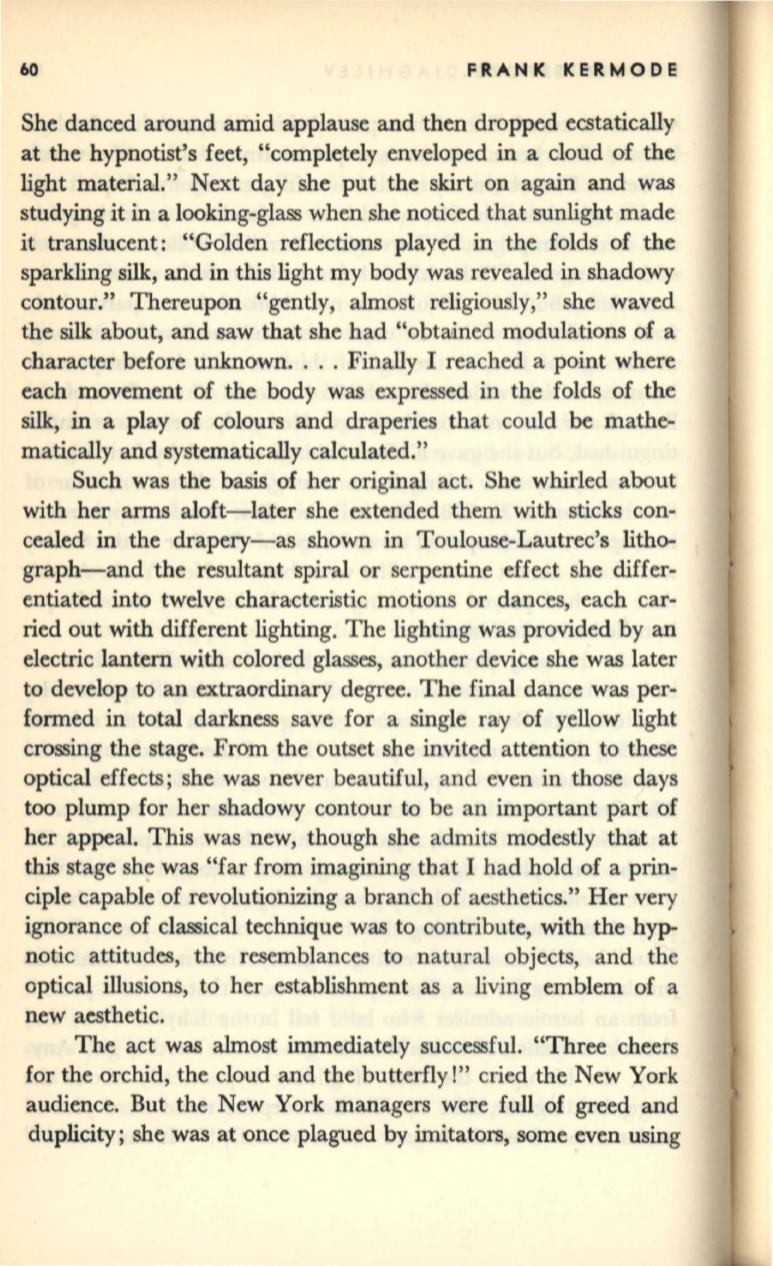
60
FRANK KERMODE
She danced around amid applause and then dropped ecstatically
at the hypnotist's feet, "completely enveloped in a cloud of the
light material." Next day she put the skirt on again and was
studying it in a looking-glass when she noticed that sunlight made
it
translucent: "Golden reflections played in the folds of the
sparkling silk, and in this light my body was revealed in shadowy
contour." Thereupon "gently, almost religiously," she waved
the silk about, and saw that she had "obtained modulations of a
character before unknown.... Finally I reached a point where
each movement of the body was expressed in the folds of the
silk, in a play of colours and draperies that could
be
mathe–
matically and systematically calculated."
Such was the basis of her original act. She whirled about
with her arms aloft-later she extended them with sticks con–
cealed in the drapery-as shown in Toulouse-Lautrec's litho–
graph-and the resultant spiral or serpentine effect she differ–
entiated into twelve characteristic motions or dances, each car–
ried out with different lighting. The lighting was provided by an
electric lantern with colored glasses, another device she was later
to develop to an extraordinary degree. The final dance was per–
formed in total darkness save for a single ray of yellow light
crossing the stage. From the outset she invited attention to these
optical effects; she was never beautiful, and even in those days
too plump for her shadowy contour to be an important part of
her appeal. This was new, though she admits modestly th<llt at
this stage she was "far from imagining that I had hold of a prin–
ciple capable of revolutionizing a branch of aesthetics." Her very
ignorance of classical technique was to contribute, with the hyp–
notic attitudes, the resemblances to natural objects, and the
optical illusions, to her establishment as a living emblem of a
new aesthetic.
The act was almost immediately successful. "Three cheers
for the orchid, the cloud and the butterfly!" cried the New York
audience. But the New York managers were full of greed and
duplicity; she was at once plagued by imitators, some even using


